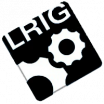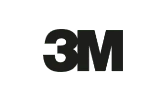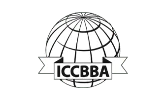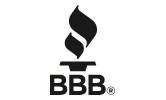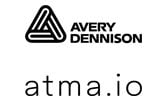RFID’s impact on tracking and identification technology is growing every day as it continues to improve efficiencies and streamline processes for companies around the world. RFID is bringing improved speed and efficiency to tracking, identification and automation systems with its variety of unique abilities.
Although RFID truly is unique and definitely has an edge over competitive technologies, it does have its limits. Through working with clients we have learned that although RFID research material is plentiful, the limits of RFID aren’t often discussed leading to some misunderstandings. In an effort to help you create a realistic RFID implementation plan with your RFID solutions partner, we have compiled and explained four common unrealistic RFID expectations.
Unrealistic Expectation #1: The read range is not impacted by outside forces
Though it’s not unrealistic to expect your RFID tags to work within their read range, it may be unrealistic to expect them to do so under certain conditions. Will your tags come into close contact with liquids or metals? Are there tag size constraints in your plan? How do you expect your tags will be oriented when they interact with the reader? All of these things must be considered to ensure your implementation plan is practical.
Interference is an issue we will talk about in more detail later on, but some materials, such as liquids and metals can greatly impact the readability of RFID tags. Things can be done to alleviate these types of issues, such as adding a foam backing to a tag placed on a container full of liquid or enlarging the tag. However, the read range is still being impacted and these accommodations may not be practical in certain cases.
Size constraints are also a very common issue when it comes to read range. A tag’s read range is heavily influenced by its size. In general, the bigger the tag the longer the read range (with a few exceptions). So, if an extremely long read range is desired, a very large tag and/or powerful/focused reader might be necessary. In cases where the tagged item is small, for example a 3ml vial, it might not be practical to implement an RFID plan that requires a 20 foot read range because the tags necessary could be larger than the vial!
Another thing to keep in mind is how your tags will be oriented when they interact with the reader. Some directionally focused reader/antennas are unable to read tags placed within their read range if they aren’t placed almost directly in line with the signal. Additionally, most readers have a hard time recognizing tags if they are oriented at a strange angle or are perpendicular to the reader. Though tags may still be readable in these situations, it’s often best to regulate their orientation in relation to the reader to ensure maximum read range.
Unrealistic Expectation #2: RFID tags are read immediately as they pass the reader
Though RFID tags do take an extremely short amount of time to read, their read rates are often misrepresented as immediate. The read rate isn’t always so fast though, just like the read range numerous factors can have an impact on it including the number of tags being scanned, the distance between the tag and the reader and interference.
Though tags can be read within fractions of seconds of one another, they can technically only be read one at a time. This means, when a reader/antenna is faced with a large number of tags to scan it can take a bit more time than usual. In addition to quantity effecting read rate, distance can affect the speed at which a tag can be read as well. The further away the tag is from the reader, the further the signals must travel between the tag and the reader making signals weaker and more susceptible to interference.
Just as interference shortens the read range it lengthens the read rate as the signal grows weaker. In cases where interference is extreme the signal may become so weak a reader might not be able to detect it.
When a high volume of tags need to be read, interference is present or tagged items are towards the further end of the read range, extra time may need to be allowed to ensure all tagged items are read. By pausing at the reader or taking multiple passes with the scanner you allow more time for the tags to be accounted for.
Unrealistic Expectation #3: Interference isn’t that big of an issue
Interference is real and RFID influencing materials will have an effect on the readability of your RFID tags. There are ways of improving readability with interference present, however nothing can completely eliminate it without removal of the cause itself.
Two categories of RFID interference exist, electrical interference and material interference.
Material interference covers what we talked about previously, where materials like liquids and metals affect a signal’s ability to travel to its destination. In the case of UHF liquids absorb RFID signals while metals reflect the signals, diverting them from their path to the reader.
Electrical interference on the other hand, occurs when devices tuned to similar frequencies as nearby tags affect their readability. Even other RFID tags can influence signals. When an RFID tag is located near another RFID tag or an electronic device that emits radio waves, like a cell phone or medical device, the antenna can detune or become blocked out by the stronger signal.
When implementing RFID it is highly recommended your RFID solutions partner perform a site survey prior to planning your RFID strategy. When your RFID solutions partner performs the site survey they will not only look for spatial concerns, but will use special equipment to locate areas where interference could be an issue. After the site survey your solutions partner can work with your needs and any interference concerns to create an RFID implementation plan that is both practical and meets your needs.
Unrealistic Expectation #4: RFID on its own can immediately track items down to their exact location
Yes, RFID is used for tracking, but RFID on its own won’t be able to tell you the exact location of your assets. Additional features are necessary to achieve accurate location tracking and the levels of accuracy can vary dramatically. A few current solutions to RFID tracking include Bluetooth/WiFi tracking, special readers, and cabinets.
Bluetooth and WiFi tracking are often used in the healthcare industry to track mobile medical equipment. While this type of tracking isn’t the most accurate form of RFID tracking, it is helpful and practical when items are being tracked through large buildings like hospitals. Bluetooth and WiFi tracking can only pinpoint the general area of a tag, so at best it will be able to identify the room or stretch of hallway where the tagged item is located.
For more precise tracking there are special readers that function similarly to a Geiger counter. With this type of reading equipment you can enter in an item identification code and the reader will notify you as you get nearer to or further from the tagged item. Though this type of equipment can give you the precise location of the item you’re looking for, it can be a bit more time consuming than one would wish.
Smart shelves and cabinets are another RFID tracking option that can tell you exactly which shelf your item is located on. Though this solution is very precise and fast it’s not practical for every implementation. Smart shelves and cabinets are an investment, and depending on the amount needed to suit your purposes they may not be as practical as other tracking options.
When looking into an RFID tracking solution it’s important to take the time to really consider how fast and precise it needs to be, and when searching for a solutions partner ensure they are aware of those needs so they can work with you to find a good match. The speed and accuracy of RFID tracking is growing in importance and therefore is growing at an alarming rate, so despite it currently being an issue, quick, precise and accessible RFID solutions are in the near future.
RFID is not magic, you can’t simply wave a wand and be done with your inventory tracking, but when properly implemented it can increase efficiency and reduce the time spent tracking products from hours to minutes. This isn’t to say you will never find your ideal RFID implementation plan, but what we are saying is that your ideal plan may not be what you envision. This is why it’s so incredibly important you consult a reputable RFID specialist to help you find out what the ideal solution is to your challenges.
Connect with our labelling experts today
Blog article form
"*" indicates required fields


